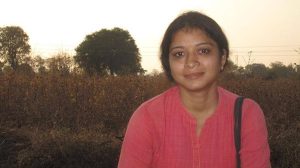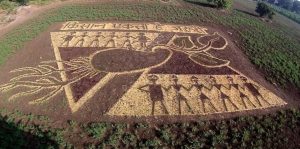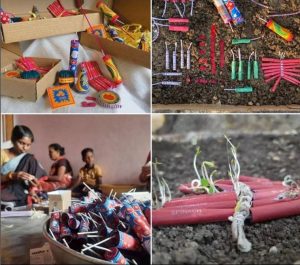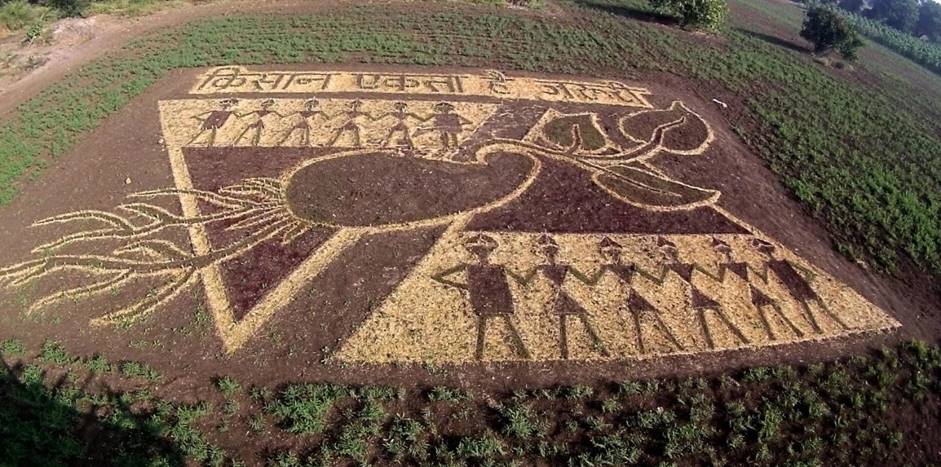Digvijay Nikam
To go to the National Gallery of Modern Art in Delhi on a weekend to engage in a contemplative appreciation of intricate paintings and sculptures might be one

Courtesy- 52Parindey
way of confronting art where the cackle of the street and the concerns of the crumbling everyday life may be kept at bay. One might at the end of the day even visit the art shop on the ground floor and buy a keychain, locket or a postcard with a Shergill or Ravi Verma printed on it, secretly yet vainly wishing to own the original someday.
Yet to an artist like Shweta Bhattad this esoteric dimension of institutionalised art spaces and the ornamental desires of audience therein, are ultimately limiting and to a degree, facile. “The purpose of art is not just to decorate our homes” says Bhattad who is an artist based in Nagpur. Working across different mediums, art for Bhattad is a means for social activism.
Over the years her works have sought to provoke thinking around questions of women’s safety, women’s education, and most importantly the precarious situation of farmers across the country. While finishing her Masters in Sculpture from MS University of Baroda, she realized the limitations of the language of sculpture to address her concerns and therefore she moved to performance, however, simultaneously trying to explore newer possibilities in sculpture. It was while studying in Baroda and conversing with other women about their experiences of child sexual harassment that Bhattad recalled her own past experiences and came to acutely realise the absence of a safe space and ubiquity of violence against women in a place where the very nation is understood as an embodiment of a woman figure, namely, Bharat Mata (Mother India). That is when she designed some of her most brilliant performances to incite public discussion around these issues where many of them especially mobilised the image of Mother India.

Courtesy- Shweta Bhattad
At a residency programme in Taiwan in December 2013 she performed a piece titled Bharat Mata in Taiwan where she walked through the beaches of Taiwan dressed as Bharat Mata. This involved draping herself in the popular Bharat Mata costume of a white saree, a golden Mukut (crown) with four arms and carrying a lotus and an Indian flag. While this image is faithful to usual pictorial depictions of the figure, Bhattad introduced a chastity belt in her costume – that does not have any precedents in earlier iconography – to complicate the performance. The performance tries to convey the freedom and safety that Bharat Mata felt in a country like Taiwan rather than her own, raising questions like – Do women, as citizens of independent India, really have autonomy and agency?
The chastity belt, a symbol of the family and state control over a woman’s sexuality was again used by Bhattad in another of her performance where she dressed women from her village as Bharat Mata in order to highlight the terrible situation for women given the absence of toilets in the village. She says, “on the one hand you want the women to be chaste, you don’t let them go out to study but on the other it is ok if they go out to defecate.”
Apart from the issues concerning women, Bhattad has been really been engaged in drawing attention to the predicament of the farming community. A daughter of a farmer father who gave up his land and moved to Nagpur to ensure better education for his children, Bhattad as a child was always disconcerted by the direful situation of farmers, always wondering – “How could the one who fed others be out of resources and food for oneself?”

Courtesy- Gram Art Project
It was around 2013-14, that Shweta decided to move from Nagpur to her ancestral home and farm in the village Paradsingha almost on the border in southern Madhya Pradesh and Maharashtra to begin her life as an artist-farmer-environmentalist, along with her collective of fourteen like-minded members. The collective comprising of ‘artists, farmers, women, makers’ is called Gram Art Project that has tried to actively mobilize local villagers, create awareness about causes for farmers’ suicides, loss of farmer’s control over land, water, and cattle. Their collective project Gram Dhara Chitra Utsav (loosely translated as ‘Village Land Art Festival’) received a grant from FICA (Foundation for Contemporary Art) in 2015. The project involved a residency that brought together artists with young farmers and youth from Paradsinga to rediscover traditional methods of farming and irrigation through developing land art installations in collaboration with each other. In the 2017 residency, the land art installation with “किसान एकता है ज़रूरी” was grown using red and green Amaranthus, Spinach, Fenugreek, and some crop stubble.
Bhattad’s artistic practice is not only geared towards drawing attention to crucial social issues but also towards ensuring a better livelihood for the underprivileged from the village through ingenious functional art that sustains not only people but also the environment. Shweta mobilized groups of rural women and taught them to make seed-embedded hand-made paper post-cards and seed-embedded rakhis with hand spun cotton thread crocheted around the seed. Once these products were past their use, they could be buried in soil and watered till the paper disintegrated, seeds sprouted and grew into a plant.
On the same lines during COVID, the Gram Art Project came up with a creative initiative called Beej Parva 2020 where they designed or ‘sculptured’ firecrackers

and sweets as their original counterparts but embedded with seeds of microgreens presented in expertly designed cardboard boxes to be sold while celebrating Deepavali. Rather than being made by exploited children from marginalized communities and feared by animals and birds, these crackers were now markers of a thriving community of women artisans working towards an ecologically sound planet.
Shweta Bhattad’s artistic practice asks us to come out of the shimmering institutional art spaces and confront the challenges plaguing the everyday lives of women and farmers. By making use of performance and community art practice to ameliorate social and ecological exploitation, Bhattad opens us to the possibilities engendered by art.
Bibliography
- https://www.shethepeople.tv/news/indias-women-artists-shweta-bhattad/
- https://ficart.org/shweta-bhattad
- https://www.caleidoscope.in/volunteering/shweta-bhattad
- https://www.netindian.in/news/features/when-the-artist-is-a-farmer-environmentalist
- https://www.netindian.in/news/features/when-the-artist-is-a-farmer-environmentalist
- https://52parindey.in/project/art-for-farmers-rights/





